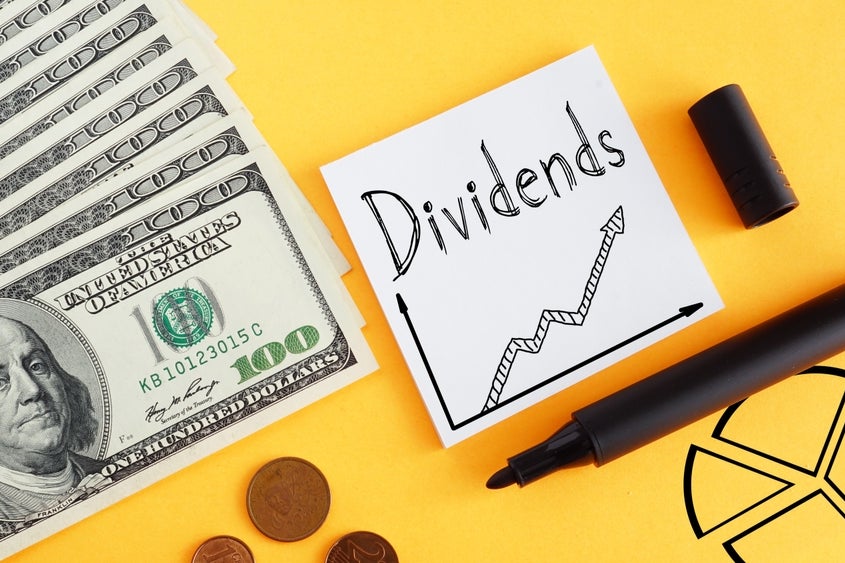[ad_1]
Dividend yields can be a critical tool for long-term investors looking to hedge against downside risk or take advantage of upside potential.
Investors can make better decisions and perhaps improve the profitability of their investment portfolio by learning how to calculate and use dividend yields.
How To Calculate: Divide the annual dividend per share by the stock price to determine the dividend yield. The dividend yield, for instance, would be 2% if a stock had a current price of $50 and paid a $1 yearly dividend per share.
Investing in stocks with high dividend yields is one efficient way to protect against downside risk.
Additionally, because high-yielding stocks are typically less volatile than low-yield stocks, they are often seen as safe investments.
For example, Kinder Morgan Inc KMI offers a 5.9% dividend yield. The stock held up well against the historically volatile market of 2022, rising 14% against the 19.2% decline in the SPDR S&P 500 ETF Trust SPY.
Interested in learning how to calculate how much Kinder Morgan stock you must own to yield $100 per month in dividends? It’s simple.
Read also: Did Someone Say Dividends? Here’s How Much Of These Tech Stocks You Need To Yield $100 Per Month
Kinder Morgan pays 5.9% in dividend yield.
Use this formula to determine how many shares you must purchase to earn $100 per month: (100 x 12) / (0.059 x the price per share).
At the current share price of $18.83, an investor must own $20,338 worth of Kinder Morgan, or 1,080 shares, in order to receive a dividend yield of $100 every month.
Why It Matters: High-yield stocks typically pay out a larger portion of their earnings in dividends, providing a steady stream of income for investors even when stock prices are falling.
On the other hand, investors can use dividend yields to capture upside potential by investing in stocks with low yields but with potential for future growth.
These stocks may offer higher capital appreciation potential, as they tend to reinvest a larger portion of their earnings back into the business to fuel growth.
Read Next: 10 Highest-Yielding Dow Jones Stocks Heading Into 2023
Photo: Jack_the_sparow via Shutterstock
[ad_2]
Image and article originally from www.benzinga.com. Read the original article here.

